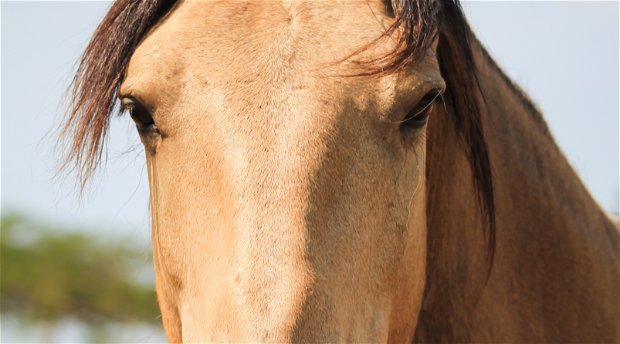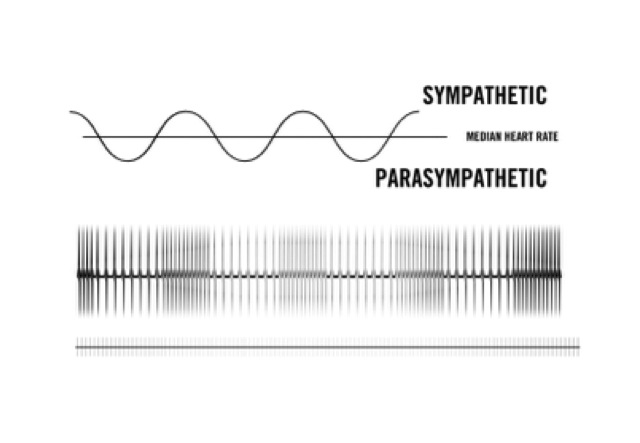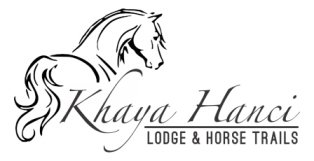Horses Heal Hearts (Or So It Seems)

A recent study by the University of Arizona, in conjunction with the HeartMath Institute, have uncovered some surprising details about what happens to our hearts when we interact with horses, and the potential benefits to our well-being.
When members of different species interact, a special physiological state comes into being that is stimulating to both. We know all too well what it “feels” like to naturally be with horses, and it either defies description or will take a much longer read than this blog post. Anecdotally, we may agree that to be with a horse, one has to relax into a gentler, steadier state, while becoming more aware of the horse’s signals and responses and potential triggers in the environment. Simultaneously, we may feel an undercurrent of excitement and exhilaration that we as humans get from positive social interactions, while we could imagine that the horse experiences something similar, stemming from its herd instinct. For both, we are dealing with a creature that could kill us, which demands mutual caution and consideration and a heightened state of awareness.
Human-horse interactions are a dance between physiological responses that are programmed into our respective survival-biased behaviours. Dr. Ann L. Baldwin of the University of Arizona, physiologist and equestrian, decided to conduct a number of experiments to quantify and measure this “dance”, in association with the HeartMath Institute.
 Dr. Baldwin and her team devised electrocardiogram (ECG) harnesses for humans and horses, Within us, our heart beats faster when our sympathetic autonomic (involuntary) nervous system prepares us for action, while the parasympathetic autonomic nervous system slows it down to relax us. While there are times where one or the other system predominates, our bodies switch between active or rest rhythms every couple of beats to maintain
Dr. Baldwin and her team devised electrocardiogram (ECG) harnesses for humans and horses, Within us, our heart beats faster when our sympathetic autonomic (involuntary) nervous system prepares us for action, while the parasympathetic autonomic nervous system slows it down to relax us. While there are times where one or the other system predominates, our bodies switch between active or rest rhythms every couple of beats to maintain
equilibrium. These change-overs between “action” and “rest” occur every 10 seconds or so (or with a frequency of ± 0.1Hz for the engineers among us).
The ability of the heart to vary between states is called Heart Rate Variability (HRV) - an indicator of physical and mental balance and well-being. People who are either overstimulated or depressed tend to have less heart rate variability, with heart rates clustered above or below the average healthy response respectively. By and large, the average “healthy” modern human is more afflicted by these imbalances than his or her equine counterpart, and, as our heart rate indicates what our entire body is doing, we can expect that these imbalances cause discomfort and even disease over time.

Like any muscle, if the heart is able to adapt fluidly between active and rest states, it suffers less exertion or damage. When the heart rate varies between fast beats and slow beats in an organised way,as opposed to abrupt jumps, this is referred to as “coherent heart rate variability”, a state that is also associated with enhanced cortical (central brain) activity, resulting in clearer thinking and more precise voluntary actions.

Dr. Baldwin and her team set up three interaction scenarios to investigate effects in HRV and HRV coherence, in both humans and horses, arising from the interaction. The first activity required the human participant to “send appreciation” (consciously harbouring a warm-hearted feeling) towards the horse, without any further contact or interaction, within relatively close physical proximity. In the second scenario the human would wait for the horse to signal a willingness to interact, and then move closer to perform a contactless “scanning” of the horse’s body. In the third scenario, the human would groom the horse, with active mindfulness of the wellbeing of the horse. Each scenario was designed to optimise physiological signals (heart rate, endocrine, metabolic), while minimising physical contact or sensory signalling.
The results of the experiments were extraordinary. The findings with regard to heart rate coherence, the smooth shift between active and passive states, were inconclusive due to a number of factors. But the patterns in heart rate variability were nothing short of astonishing.
In measuring heart rate coherence, a number of challenges came to the fore. First of all, a relaxed and healthy horse automatically displays coherent heart rate variability in the absence of threats. It was therefore very difficult to determine whether the nonthreatening human presence made any impact on the horse. Yet, in the first and third scenarios, both of which asked the human participant to “feel good feelings” towards the horse, the human’s heart rate became more coherent. This finding adds weight to the HeartMath Institute’s findings (in other experiments) that a state of appreciation, gratitude or benevolence will bring the human heart into coherence, resulting in a sense of well-being and clearer physiological and mental processing. Humans typically have either neutral or positive connotations towards horses in general, and so these amazing animals provide a great focal point for practising positive emotions.
Yet, it was the recorded patterns in heart rate variability that brought an entirely new discovery with intriguing implications. First off, it should be noted that the ECG monitors used on both humans and horses measure the electromagnetic field strength generated by every pulse of the heart. It has long been known that this magnetic field extends well beyond the physical boundary of the organism. It is also known that a stronger magnetic field (that of the horse in this instance) can influence weaker magnetic fields (human) and even bring pulses into synchronisation, much like pendulum clocks on a shared surface will transfer energy between each other until both are swinging in rhythmic unison (as discovered by Christiaan Huygens).
While a form of synchronisation emerged between horse and human participants, it is not at all of the kind that was to be expected. In the Huygens model, the exchange of energy through the heart’s direct electromagnetic pulses should either speed up the horse’s resting heart rate (28-48 beats per minute) to match that of the human (60-100 beats per minute), or slow down the heart rate of the human, until both have the same heart rate. This didn’t happen (and would have been quite uncomfortable, if not life threatening, for one or both participants). The horse maintained it’s resting heart rate and the human retained his or her heart rate.
What the observations did show, is that there is an exact match up of Heart Rate Variability, but with a delay of 30 seconds from horse to human (in most cases). As expected, the changes in heart rate occurred every ± 10 seconds in horse and human, but a second “guiding pulse” appears every ± 500 seconds. This Very Low Frequency correlation, is absent when either horse or human heart rates are measured in isolation. This means that, through the electromagnetic field, there is a form of purely physiological communication, electromagnetically mediated, that exists between the nervous system of the horse and the human, which cannot be explained by physics or by conscious external signalling, as it involves the synchronisation of two very complex and yet entirely involuntary nervous systems.
That the human nervous system normally becomes entrained to that of the horse has profound implications on the question of whether man tames beast, or beast tames man. On the surface, these findings suggest that the horse has an ability to first bring humans into the correct physical and mental state before interacting. As the horse’s heart field affects the HRV of the human, it also affects all other physiological fight-or-flight responses and may induce a state of being in the human that makes it possible for the horse to interact, without getting “spooked” or feeling uncomfortable. That is, the horse tames the human at an involuntary, irresistible level, first. The exception to all the other studied human subjects, was an experienced energy healer (Reiki) who follows a discipline that sensitises her to bio-energetic fields. Marsha Brown was able to lead the horse in the HRV dance by 15 seconds.
While the study didn’t directly investigate interactions between horses, these findings may reveal an important aspect of herd behaviour, as there could likely be a medium of communication between horses that affects physiological processes (such as endocrine releases) directly, without external signalling or mediation. In essence, the herd could be said to share a common heart rhythm, emotions, pain and joy. That our own hearts manifest these “guiding pulses” means that we too possess this faculty, although we are not mentally aware of it, and this may go a long way in explaining our own social “herd” choices and rationalisations.
 Beyond these remarkable insights, the purpose of these experiments were not simply to qualify academic theorems, but also to investigate real therapeutic benefits. A large percentage of the subject volunteers were people of advancing age, and they were asked about their own perceptions. The recorded physiological benefits were clear - subjects experienced better HRV responses with increased coherence. All reported feeling an enhanced sense of self-esteem.
Beyond these remarkable insights, the purpose of these experiments were not simply to qualify academic theorems, but also to investigate real therapeutic benefits. A large percentage of the subject volunteers were people of advancing age, and they were asked about their own perceptions. The recorded physiological benefits were clear - subjects experienced better HRV responses with increased coherence. All reported feeling an enhanced sense of self-esteem.
Horses are simply amazing creatures, and we are perhaps only beginning to learn the subtler aspects of our millennia-long interspecies collaboration. One cannot help but to think of the James Cameron film Avatar, where on a far-off planet, one “plugs” into one’s mount for the ultimate riding experience. Here we have WiFi. Could this be the connection that the Ayrudzi, Mongols, Comanche and other gifted equestrian peoples experienced? Was this connection symbolised by the Centaur in the minds of the Greeks?
It seems that the better we get to know horses, the better we may understand ourselves.

Share This Post